Back
MOTHER-OF-PEARL INLAY (RADEN)
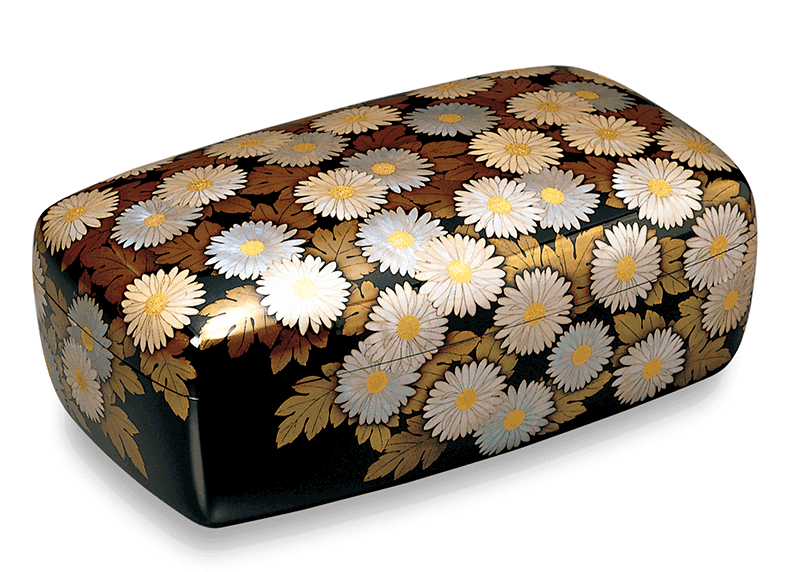
Description
Mother-of-pearl inlay (Raden) is a decorative technique that uses the iridescent inner layer of abalone shell, turban shell, pearl oyster shell, or other mollusk shells. The technique came to Japan from China 1,300 years ago, and pieces featuring mother-of-pearl inlay are included among the artifacts at the Shōsōin Repository in Nara.
Mother-of-pearl inlay is divided into two categories depending on the thickness of the shell inlay. Thin shell inlays (usugai, or aogai) have a thickness of less than 0.1 millimeter and are created by sanding down the shell or boiling it and peeling the layers apart. Materials such as gold or silver can be applied to the back of the shell to add color or luster in a technique known as urazaishiki (“back coloring”).
Thick shell inlays (atsugai) are flat shells that have been sanded to a thickness of approximately 1 millimeter. The special beauty of mother-of-pearl inlays comes from the contrast between the jewel-like luster of the shells and the deep tones of the lacquer. The flower petals in the piece pictured above are rendered in pearl oyster shell using urazaishiki back coloring.
Process for thick shell inlay
-
 1.Pieces of shell are cut out with a piercing saw.
1.Pieces of shell are cut out with a piercing saw. -
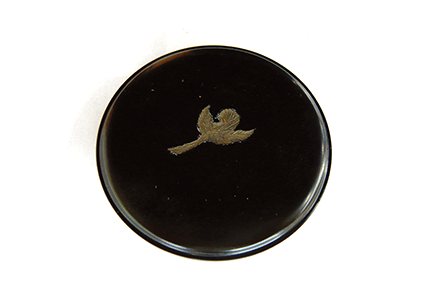 2.A motif is carved into the lacquered surface of the piece.
2.A motif is carved into the lacquered surface of the piece. -
 3.The shell is inlaid into the recess in the piece’s surface.
3.The shell is inlaid into the recess in the piece’s surface. -
 4.The piece is decorated with maki-e and completed by burnishing.
4.The piece is decorated with maki-e and completed by burnishing.
Process for thin shell inlay
-
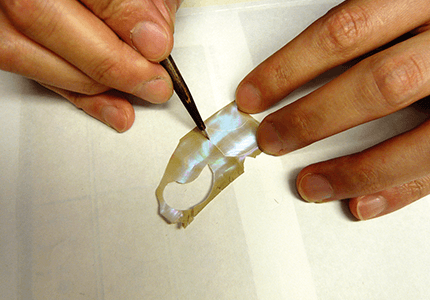 1.Pieces of shell are cut out with a knife.
1.Pieces of shell are cut out with a knife. -
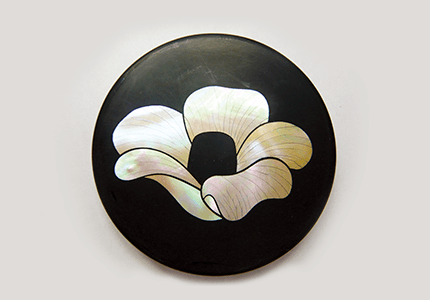 2.Lacquer is applied to the back of the shell, which is then affixed to the surface of the piece.
2.Lacquer is applied to the back of the shell, which is then affixed to the surface of the piece. -
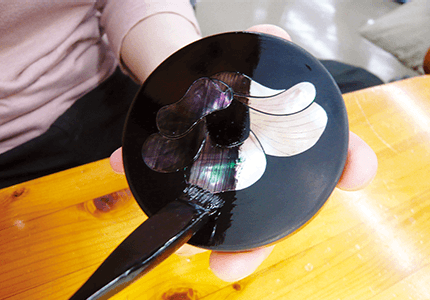 3.A coat of lacquer is applied over the entire surface and then polished down to reveal the shell.
3.A coat of lacquer is applied over the entire surface and then polished down to reveal the shell. -
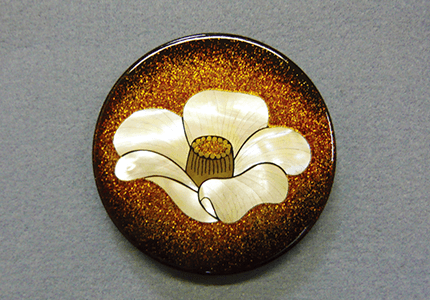 4.The piece is decorated with maki-e and completed by burnishing.
4.The piece is decorated with maki-e and completed by burnishing.
-
Reference: Nihon Kōgeikai Higashi Nihon Shibu (Japan Kōgei Association Eastern Branch), ed., Dentō kōgei-tte nani? – miru, shiru, tanoshimu gaido bukku (What Are Traditional Crafts? –A Guidebook to Seeing, Learning, and Enjoying). Unsodo, 2013.
